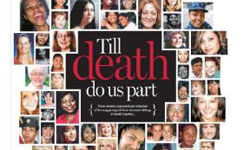In this year of consolidation in the newspaper industry, Gannett, New Media Investment Group and Tribune Publishing have scooped up dozens of titles in the name of efficiency. That makes the family-owned Post and Courier of Charleston, S.C. an outlier — and proud to be one.
The Post and Courier has clearly been on a roll editorially, winning the Pulitzer Prize for Public Service in April with high impact coverage in 2014 of domestic violence and the weak South Carolina laws to stop it. Since then the paper has responded strongly on a police killing of an unarmed man in North Charleston, followed by horrific shootings after a church prayer meeting, and the decision to remove the Confederate flag from the state capitol.
But the Post and Courier has business tricks up its sleeve as well — enough that top executives John Barnwell and P.J. Browning were asked to give the keynote Saturday at an Inland Press Association conference in Chicago for family owners.
I spoke to both by phone last week and found that the company had made key strategic moves years ago and more of them recently to stay viable without the advantage of chain-group scale.
- The paper is owned by the old-Charleston Manigault family but run by professional managers. Barnwell, president and CEO of the parent Evening Post Industries since the late 2000s had a long career as a Charleston banker (and his predecessor was also a banker). Publisher Browning came to the company after 30 years with Gannett, Knight Ridder, and McClatchy.
- The two-company structure aims at diversification. Evening Post owns a small group of TV stations, mostly in the Northwest and seven smaller South Carolina papers. Under Barnwell’s watch it has acquired a stake in a hospice company and bought a small ad agency in Minneapolis, home of one of its stations, specializing in marketing services. Evening Post also gave birth to Garden & Gun, a frequent National Magazine Award winner, but it was spun off.These “third lines of business” Barnwell told me accounted for 9 percent of revenue this year and are expected to rise to 15 percent next year.
- The Evening Post also worked a twist on the familiar problem of disposing of a bigger building and surrounding land that it no longer needs. Rather than just selling to a developer, Barnwell said, the company will be a partner in plans for the 12 acres, including a large office and retail complex, expected to unfold in three stages over nearly a decade.
- Financial results for 2015, while not fabulous, are better than the norm. “We saw reductions in major advertisers and preprints coming and worked hard to mitigate the losses,” Browning said. “We will be 3 percent off in revenue from last year and were actually 2 percent above for the quarter.”
- Without specifying a number, Barnwell said, “it’s no secret that our margins are not as high as in the general industry. (The owners) have sacrificed some profit to get the best people” and provide a pool for the new business investments. And to cover the occasional flop — Barnwell cited an online business directory/review site launched in 2008 “that never gained enough traction over the two years or so we operated it” and was liquidated.
- Browning said that in the regular operations of the Post and Courier she also is encouraged to take some risks. She agreed to expanding a project team from two positions to five, including a developer. That group did most of the work on the Pulitzer-winning “Till Death Do Us Part” series.
As the iconic Ravenel bridge turned 10 this year, the obvious move was to do an ad-supported special section. But Browning thought that wasn’t innovative enough so the Post-Courier instead orchestrated an elaborate event, bringing in two Lego engineers from Europe to build a 25-foot replica. The celebration brought in nearly $300,000 in revenue, Browning said.
Barnwell and Browning both said that their digital products are more than adequate and building audience, but aggressive digital transformation is not in the cards for now. “If we had a better idea how to monetize it,” Barnwell said, “we might move more quickly. But we do invest in (digital) content.”
Likewise, Browning said, “print is still at the heart of who we are.” She said that most readers are seven-day subscribers and that the company does not even offer the three-day weekend subscription package that has become standard most places.
It helps the Post Courier’s prospects too that these are good times for the Charleston area with new Boeing and Volvo facilities coming in on top of the historic core city’s spectacular real estate and its draw for tourists.
As for the future, Barnwell said that he expects the acquisitions to continue. “We’re still looking for adjacencies to the newspaper business — content plays — but other smaller businesses as well.
And at a time when the standard playbook is more rounds of newsroom cuts, the Post Courier is different. Browning told me, “I assumed that we had a larger newsroom (than typical for a paper its size),” she said, “but we compared ourselves with a group of independent newspapers, and found that we didn’t. We were middle of the pack. That’s something I’ll need to look at for 2016.”








